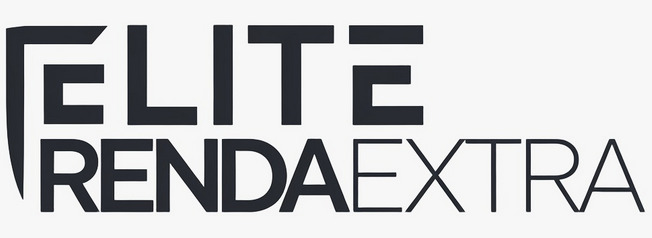Navigating the world of personal finance can often feel like charting a course through complex waters. When unexpected expenses arise or a significant purchase is on the horizon, understanding your borrowing options becomes crucial. Personal loans can be a valuable tool in these situations, offering a structured way to access funds when you need them.
This information aims to demystify personal loans, providing a clear overview to help you grasp the fundamental concepts. By exploring the various facets of personal loans, from their basic definition to the nuances of their terms, you can approach financial decisions with greater confidence and knowledge, ensuring you make choices that align with your individual circumstances.
What Exactly is a Personal Loan?
At its core, a personal loan is a sum of money borrowed from a financial institution, such as a bank, credit union, or online lender, which you agree to repay over a set period. Unlike mortgages or auto loans, which are designated for specific purchases (a house or a car, respectively), personal loans can typically be used for a wide array of purposes. This flexibility is one of their primary attractions.
These loans are often unsecured, meaning they don’t require you to put up collateral like your home or car. However, secured personal loans do exist and may offer different terms. The repayment usually involves fixed monthly installments that include both principal (the amount borrowed) and interest. Understanding these basic mechanics is the first step in comprehending your personal loan options.
Key Considerations Before You Borrow
Before diving into the application process for any personal loan, it’s vital to undertake some careful consideration and self-assessment. Rushing into borrowing without a clear understanding of your financial situation and the loan’s implications can lead to difficulties down the line. Taking a measured approach will empower you to make sound financial choices.
Assessing Your Needs and Repayment Capacity
The first question to ask yourself is: why do I need this loan, and how much do I truly need to borrow? It’s tempting to apply for a larger amount than necessary, but remember, every dollar borrowed incurs interest. Be realistic about the sum required to meet your specific goal, whether it’s consolidating debt, covering medical expenses, or funding a home improvement project.
Equally important is an honest evaluation of your ability to repay the loan. Scrutinize your monthly budget – income versus expenses – to determine how much you can comfortably allocate towards loan repayments without straining your finances. Lenders will also assess this, but your personal comfort level is paramount. Consider potential future changes in your income or expenses as well.
Understanding Your Credit Score’s Impact
Your credit score plays a significant role in the world of personal loans. Lenders use it as a key indicator of your creditworthiness – essentially, how likely you are to repay borrowed money. A higher credit score generally translates to better loan terms, including lower interest rates and potentially higher borrowing amounts.
Before you start exploring loan options, it’s advisable to check your credit report and score. This allows you to identify any errors that might be negatively impacting your score and gives you an idea of the types of loan offers you might qualify for. If your score is lower than desired, you might consider taking steps to improve it before applying, or you may need to look at loan options specifically designed for individuals with fair or poor credit, which often come with higher interest rates.
The Importance of Comparing Lenders
Not all lenders are created equal, and their personal loan offerings can vary significantly. Interest rates, fees, loan amounts, and repayment terms can differ from one institution to another. Therefore, shopping around and comparing offers from multiple lenders – including traditional banks, local credit unions, and reputable online lenders – is a critical step.
Look beyond just the advertised interest rate. Pay close attention to the Annual Percentage Rate (APR), which includes both the interest rate and any associated fees, giving a more accurate picture of the loan’s total cost. Reading reviews and checking a lender’s reputation can also provide valuable insights into their customer service and lending practices.
Exploring Different Types of Personal Loans
The term “personal loan” encompasses a variety of loan structures, each with its own characteristics and best-use scenarios. Understanding these distinctions will help you identify which type of loan might be most suitable for your specific financial needs and circumstances.
Unsecured Personal Loans
This is the most common type of personal loan. As the name suggests, an unsecured loan does not require you to pledge any collateral (like your house or car) to secure the loan. The lender’s decision to approve the loan and the terms offered are based primarily on your creditworthiness, income, and debt-to-income ratio. Because there’s no collateral for the lender to seize if you default, these loans may carry slightly higher interest rates compared to secured loans, reflecting the increased risk for the lender.
Secured Personal Loans
In contrast, secured personal loans require you to offer an asset as collateral. This could be a savings account, a vehicle, or another valuable possession. If you fail to repay the loan according to the terms, the lender has the right to take possession of the collateral to recoup their losses. Because the lender’s risk is lower with a secured loan, they may offer more favorable terms, such as a lower interest rate or a higher loan amount, even to borrowers with less-than-perfect credit.
Fixed-Rate vs. Variable-Rate Loans
Personal loans can come with either fixed or variable interest rates. A fixed-rate loan means your interest rate, and therefore your monthly payment, will remain the same throughout the entire life of the loan. This predictability makes budgeting easier. A variable-rate loan has an interest rate that can fluctuate over time based on changes in a benchmark interest rate. While variable rates might start lower than fixed rates, they carry the risk that your payments could increase if the benchmark rate rises.
Debt Consolidation Loans
Specifically designed to help manage existing debt, a debt consolidation loan allows you to combine multiple debts (such as credit card balances or other high-interest loans) into a single new loan. The goal is often to secure a lower overall interest rate and simplify repayments into one manageable monthly payment. This can be an effective strategy for reducing interest costs and getting out of debt faster, provided the terms of the consolidation loan are favorable.
Decoding Loan Terms and Conditions
The fine print of any loan agreement contains crucial details that dictate the cost and obligations of borrowing. It’s essential to thoroughly understand these terms before committing to a personal loan. Overlooking these details can lead to unexpected costs or difficulties in managing the loan.
Interest Rates (APR)
The interest rate is the percentage of the loan principal that the lender charges you for borrowing money. However, the Annual Percentage Rate (APR) is a more comprehensive measure of the loan’s cost. The APR includes the interest rate plus any other fees associated with the loan, such as origination fees or administrative charges, expressed as an annual rate. Always compare APRs when evaluating loan offers to get a true sense of the overall expense.
Loan Term (Repayment Period)
The loan term is the length of time you have to repay the loan in full. Personal loan terms typically range from one to seven years, though shorter or longer terms may be available. A shorter loan term means higher monthly payments but less interest paid overall. Conversely, a longer loan term will result in lower monthly payments, but you’ll pay more in total interest over the life of the loan. Choose a term that balances affordable monthly payments with minimizing total interest costs.
Fees and Charges
Beyond the interest, personal loans can come with various fees. Common ones include:
- Origination fees: A one-time fee charged by the lender for processing the loan, often a percentage of the loan amount.
- Late payment fees: Penalties charged if you miss a payment deadline.
- Insufficient funds fees: Charged if a payment bounces due to lack of funds in your account.
It’s important to ask about all potential fees upfront so you can factor them into your decision.
Prepayment Penalties
Some loans include a prepayment penalty, which is a fee charged if you pay off your loan earlier than the agreed-upon term. Lenders impose these penalties to compensate for the interest income they would lose from an early payoff. If you anticipate being able to pay off your loan ahead of schedule, look for loans that do not have prepayment penalties.
The Personal Loan Application Process: A Brief Overview
While specifics can vary between lenders, the general process for applying for a personal loan follows a similar pattern. Being prepared for each step can make the experience smoother and quicker.
Gathering Necessary Documentation
Lenders will require certain information and documents to assess your application. Typically, this includes:
- Proof of identity (e.g., driver’s license, passport)
- Proof of address (e.g., utility bill, lease agreement)
- Proof of income (e.g., pay stubs, tax returns, bank statements)
- Details of your existing debts and assets
- Social Security number (or equivalent, depending on region) for credit check purposes
Having these documents ready can expedite the application process.
Submitting Your Application
Most lenders now offer online application portals, making it convenient to apply from anywhere. You’ll fill out an application form with your personal and financial details and then submit the required documentation. Some lenders may offer a pre-qualification process, which can give you an idea of whether you’re likely to be approved and what terms you might receive, often with only a soft credit check that doesn’t impact your score.
Approval and Fund Disbursement
Once your application is submitted, the lender will review it, which involves verifying your information and conducting a hard credit inquiry (which can slightly affect your credit score). If approved, you’ll receive a loan offer detailing the amount, interest rate, APR, term, and monthly payment. Review this carefully. If you accept the offer, you’ll sign the loan agreement, and the funds will typically be disbursed to your bank account, sometimes within a few business days or even sooner with some online lenders.
Responsible Borrowing: Making Informed Decisions
Taking out a personal loan is a significant financial commitment. Approaching it responsibly is key to ensuring it serves as a helpful tool rather than a source of financial stress. Informed decisions are built on careful planning and a clear understanding of your obligations.
Borrow Only What You Need
It can be tempting to borrow more than you strictly require, especially if you’re approved for a larger amount. However, remember that you’ll pay interest on the entire sum borrowed. Resist the urge to take on extra debt for non-essential purposes. Stick to borrowing only the amount necessary to achieve your specific financial goal.
Have a Clear Repayment Plan
Before you even apply, ensure you have a solid plan for how you will make the monthly payments. This means incorporating the loan payment into your regular budget and making any necessary adjustments to your spending habits. Setting up automatic payments can help avoid missed payments and potential late fees, which can also negatively impact your credit score.
Reading the Fine Print
This cannot be stressed enough: always read the entire loan agreement thoroughly before signing. Understand all the terms, conditions, fees, and penalties. If there’s anything you don’t understand, ask the lender for clarification. Being fully informed protects you from unwelcome surprises and ensures you’re comfortable with the commitment you’re making.
By thoughtfully considering these aspects, individuals can better navigate the landscape of personal loans, utilizing them as a strategic financial resource when appropriate, rather than an impulsive decision. Financial literacy in this area empowers you to manage debt effectively and work towards your financial objectives with greater assurance.



